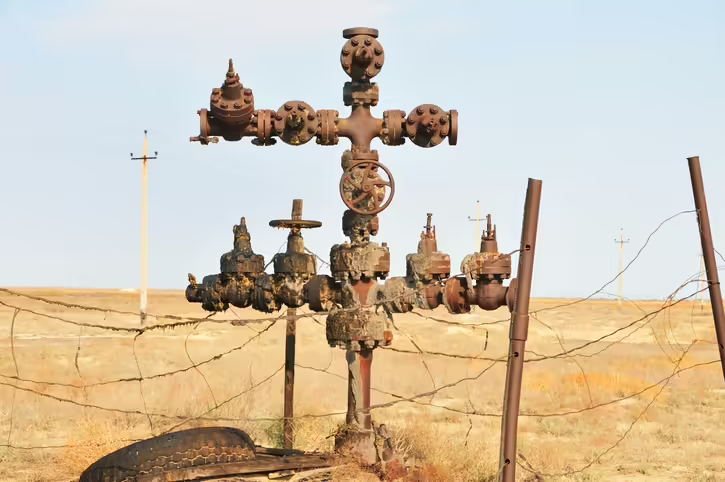
Undefeated Texas Oilfield Accident Lawyer
New research has identified a connection between recent blowouts involving so-called “zombie wells” in the Permian Basin and the wastewater from fracking operations that is typically injected underground for permanent disposal.
The study’s findings not only raise the specter of significant groundwater contamination in the nation’s most productive oilfield but also suggest a strong potential for more blowouts involving old Permian wells in the future.
Zombie Well Blowouts Threatening West Texas Ranchland
Old, abandoned wells are ubiquitous in oil and gas-producing regions across the United States.
In fact, according to the Environmental Protection Agency, as many as 3.7 million of these zombie wells exist in the country. Many are considered orphans, meaning there’s no longer an owner or company that state regulators can hold responsible for them.
In recent years, a number of ranchers across West Texas have reported that contaminated water from abandoned Permian wells was seeping—and sometimes gushing—onto their land from underground. Just last year, for example, an eruption of salty water swamped several acres on a ranch near Imperial, Texas, resulting in a multi-million-dollar cleanup. In 2022, a geyser emerged from a well in Crane County and another zombie well spouted on the Antina Cattle Ranch. Nearby, an abandoned Pecos County well has leaked briney water for almost two decades, creating a permanent feature that has come to be dubbed Boehmer Lake.
According to ranchers interviewed by the Texas Tribune, the salty water seeping and gushing from some of the Permian’s zombie wells erodes equipment and kills plants. Once it dries up, it leaves a white crust of salt over the ground. Because little can be done to remediate salt contamination, some ranchers are becoming increasingly concerned that these zombie well blowouts will eventually render their land unusable.
Fracking Injection Wells Were Already a Prime Suspect
West Texas drillers pump millions of gallons of produced water into the ground every day, and the practice has long been considered a prime suspect behind the zombie well blowouts. Theoretically, the water should stay put; however, any number of geological factors could cause the briney liquid to escape its subterranean confines, potentially impacting pressures in other underground pockets.
“There’s been such an increase in disposal of produced water over the past decade, there’s an overwhelming amount of water being disposed,” Dominic DiGiulio, an environmental consultant and geoscientist who has worked for 30 years at the Environmental Protection Agency, told Inside Climate News earlier this year. “That pressure has to go somewhere. So if there’s a well penetration then it’s going to move freely up that well penetration.”
Some Permian drillers have been exploring alternatives to injection well disposal, and a small portion is reused in fracking. According to the Texas Tribune, the state is also in the process of permitting facilities to treat fracking wastewater and return it to rivers and streams. But for now, injection wells remain the cheapest way to dispose of fracking wastewater.
Fracking Wastewater Traveled 12 Miles Before 2022 Blowout
The newly published study, conducted by researchers at Southern Methodist University, determined that wastewater from nine fracking injection wells had managed to travel 12 miles through geological faults before bursting to the surface through a previously plugged West Texas oil well in 2022.
According to the report published in Geophysical Research Letters, injection at those wells began in 2018 at a rate of about 362,000 gallons per day and doubled to 720,000 gallons per day by late the following year. The injection rate doubled again – to 1.5 million gallons — in 2020. That same year, the ground around the blowout site began to inflate. According to the research team, the volume injected matched the volume of the surface bulge 12 miles away.
“These observations suggest that this group of injection wells to the NW of the study area, injecting into the San Andres and Glorieta formations, is responsible for the surface deformation in the region,” the study authors wrote.
While previous research has hinted at such a connection, this study is the first to directly link a zombie well blowout to fracking wastewater injections.
West Texas Groundwater Supply at Risk
According to the researchers behind the SMU study, the findings suggest “a potential for more blowouts in the near future.” That wouldn’t just endanger ranchers’ livelihoods. It could also pose a significant threat to the region’s groundwater.
According to the Texas Tribune, produced water injected into the ground could eventually make its way into groundwater supplies in one of two ways: Wastewater migrating into an old well could spill out onto the ground through corroded holes in the casing, or it could flow up the side of an old well into the freshwater aquifer through the cement surrounding the steel pipe. Either scenario would be disastrous for West Texas, which relies almost entirely on groundwater for crop irrigation and drinking water.
“Once groundwater contamination happens, it’s too expensive to remediate,” DiGiulio said. “So when it occurs, that’s basically it. You’ve ruined that resource.”
Undefeated Texas Oilfield Accident Lawyers: Call 1-888-603-3636 for a Free Consult.
Our Undefeated Texas Oilfield Accident Lawyers are monitoring developments related to the Permian Basin blowouts and will post updates as new information becomes available.
In addition to being undefeated, we’ve recovered billions in connection with oilfield blowouts, explosions, and accidents across Texas and throughout the United States and consistently win record-setting verdicts and settlements against the largest oilfield operators and servicing companies in the country.
If you were impacted by a zombie well blowout in the Permian Basin or anywhere else, please call 1-888-603-3636 or click here to fill out our confidential contact form.
We’ll take the time to answer all of your questions, explain your legal rights, and ensure you have the information you need to make the right decision for your family.